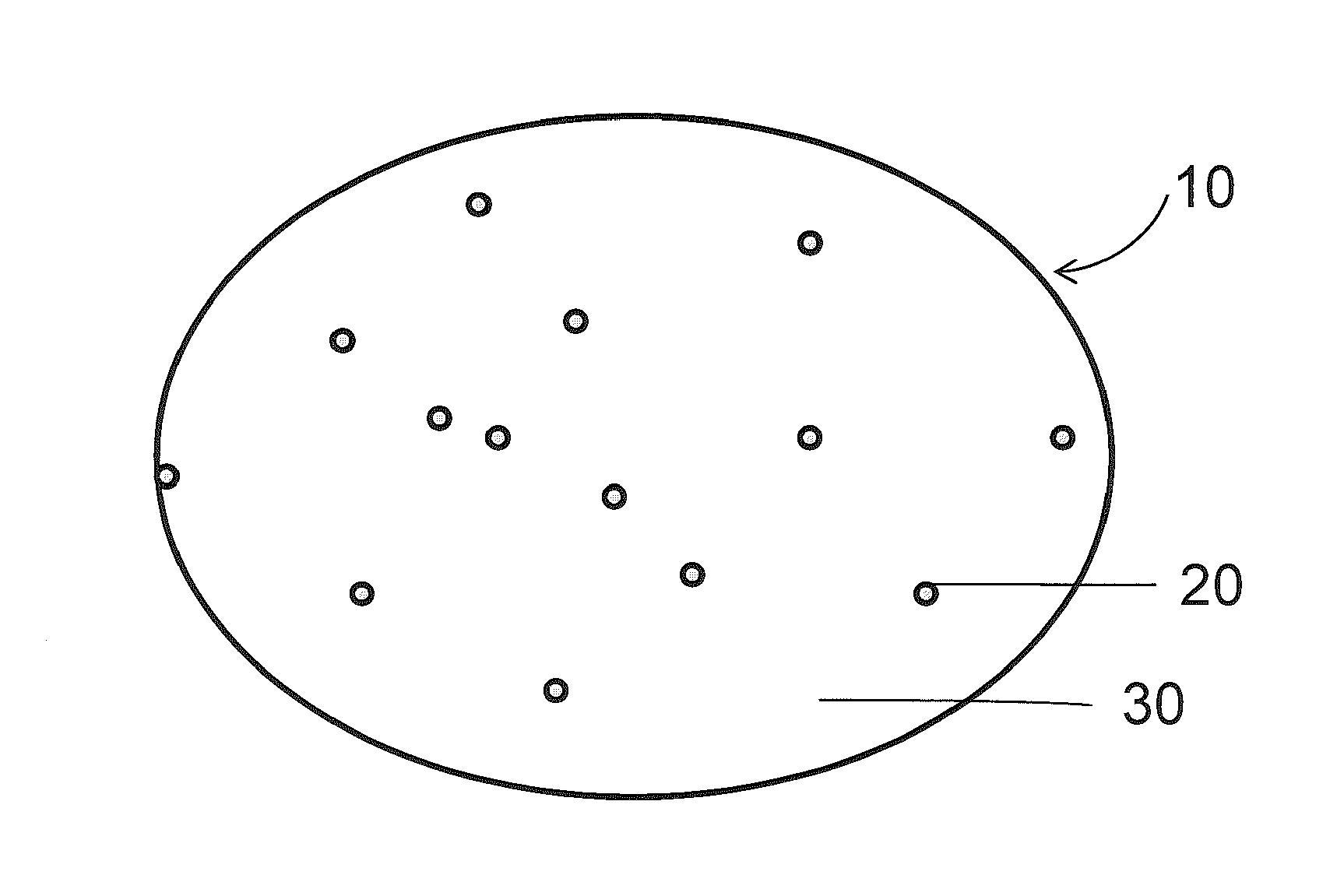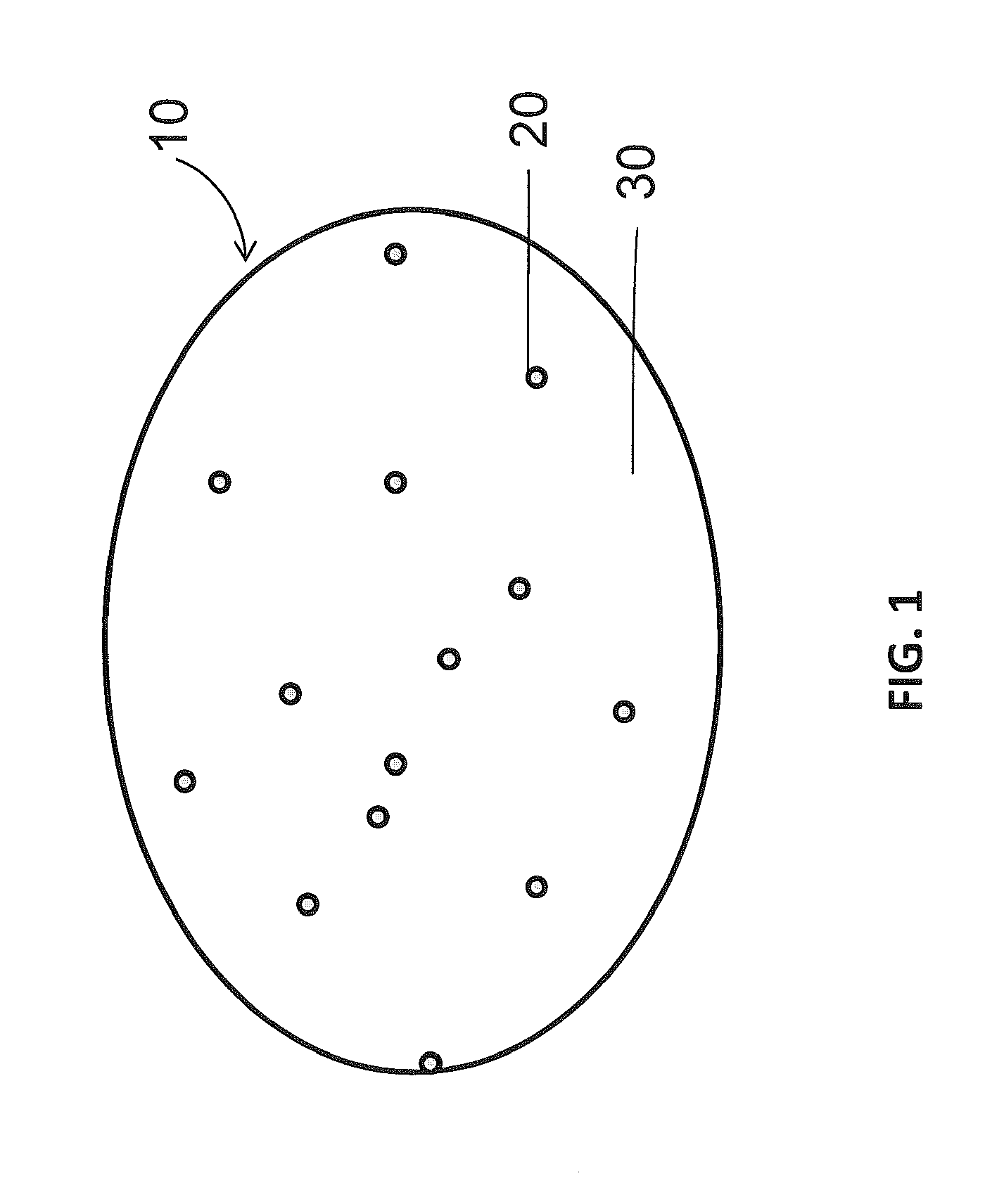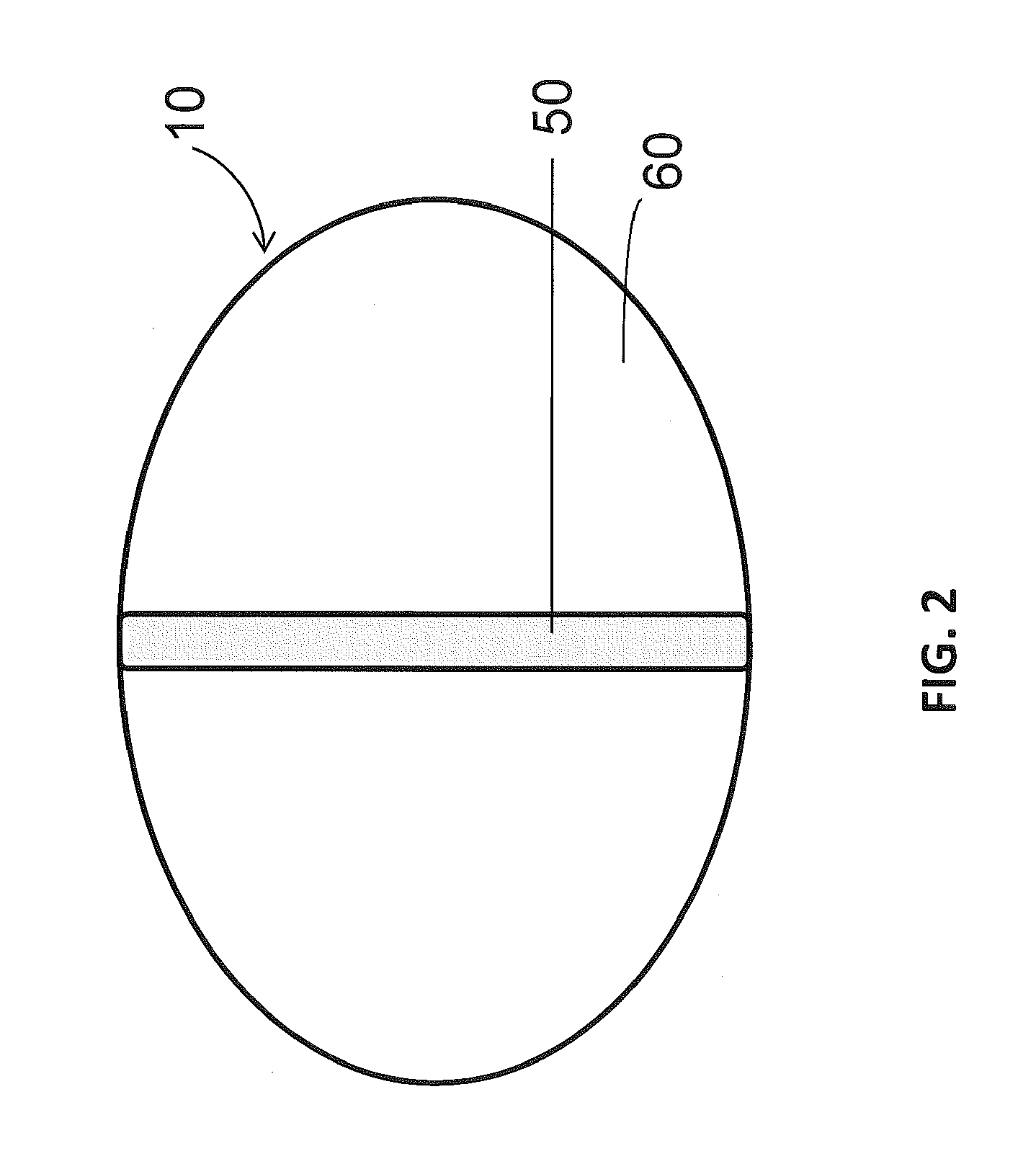Remelted ingestible products
a technology of remelted ingestible products and products, which is applied in the direction of drug compositions, tobacco treatment, tobacco, etc., can solve the problems of inability to use, alter the nature of the resultant orally ingestible hard boiled products, and certain ingredients can decompose at elevated temperatures, so as to reduce the exposure of temperature sensitive ingredients, prolong heating times, and the effect of elevated heating temperatures
- Summary
- Abstract
- Description
- Claims
- Application Information
AI Technical Summary
Benefits of technology
Problems solved by technology
Method used
Image
Examples
example 1
Preparation of Hard Boiled Tobacco Extract-Containing Product with Buffer
[0088]Isomalt glass is prepared by heating isomalt (92.41 g) in excess of 166° C. (330° F.), cooling the melted isomalt to below 149° C. (300° F.), mixing an aqueous tobacco extract comprising 50% solids (7.55 g of extract) into the isomalt, casting the mixture onto a parchment sheet and cooling the mixture to room temperature, giving a solid with a glassy appearance (light brown and transparent). The cooled glassy solid is ground into a powdered glass.
[0089]A portion of the powdered glass (40 g) is blended at room temperature with a carbonate buffer mixture (0.599 g, 2% of the powder weight) comprising 97% sodium bicarbonate and 3% sodium carbonate. The blended powder material is transferred to a mold and the mold is placed into an oven at 102° C. for 3 minutes and removed. The resulting material is in a solid (melted) form and is light yellow and opaque. There is no evidence of the decomposition of the bicarb...
example 2
Evaluation of Higher Sodium Carbonate Content and Longer Heating Time
[0090]An additional 0.620 g of the carbonate buffer mixture described in Example 1 and an additional 0.084 g sodium carbonate are added to 30 g of the blended powder material of Example 1. The pH of a 5% solution in water was 7.70. An additional 0.080 g sodium carbonate are added and the pH of a 5% solution in water was 8.23. A portion of this powdered blend is transferred to a mold and the mold is placed into an oven at 102° C. for 3 minutes and removed. The resulting material is in a solid (melted) form and is light yellow and opaque. Another portion of the powdered blend is transferred to a mold and the mold is placed into an oven at 102° C. for 6 minutes and removed. The resulting material is in a solid (melted) form and is light yellow and opaque and again shows no evidence of decomposition of the bicarbonate.
example 3
Hard Boiled Tobacco Extract-Containing Product without Buffer
[0091]A portion of the powdered glass prepared according to Example 1 is transferred to a mold and the mold is placed into an oven at 102° C. for 3 minutes and removed. The resulting material is in a solid (melted) form and exhibits the same visual characteristics as the melted and cooled tobacco extract-containing isomalt, i.e., a glassy appearance (light brown and transparent).
PUM
| Property | Measurement | Unit |
|---|---|---|
| temperature | aaaaa | aaaaa |
| temperature | aaaaa | aaaaa |
| temperature | aaaaa | aaaaa |
Abstract
Description
Claims
Application Information
 Login to View More
Login to View More - R&D
- Intellectual Property
- Life Sciences
- Materials
- Tech Scout
- Unparalleled Data Quality
- Higher Quality Content
- 60% Fewer Hallucinations
Browse by: Latest US Patents, China's latest patents, Technical Efficacy Thesaurus, Application Domain, Technology Topic, Popular Technical Reports.
© 2025 PatSnap. All rights reserved.Legal|Privacy policy|Modern Slavery Act Transparency Statement|Sitemap|About US| Contact US: help@patsnap.com



